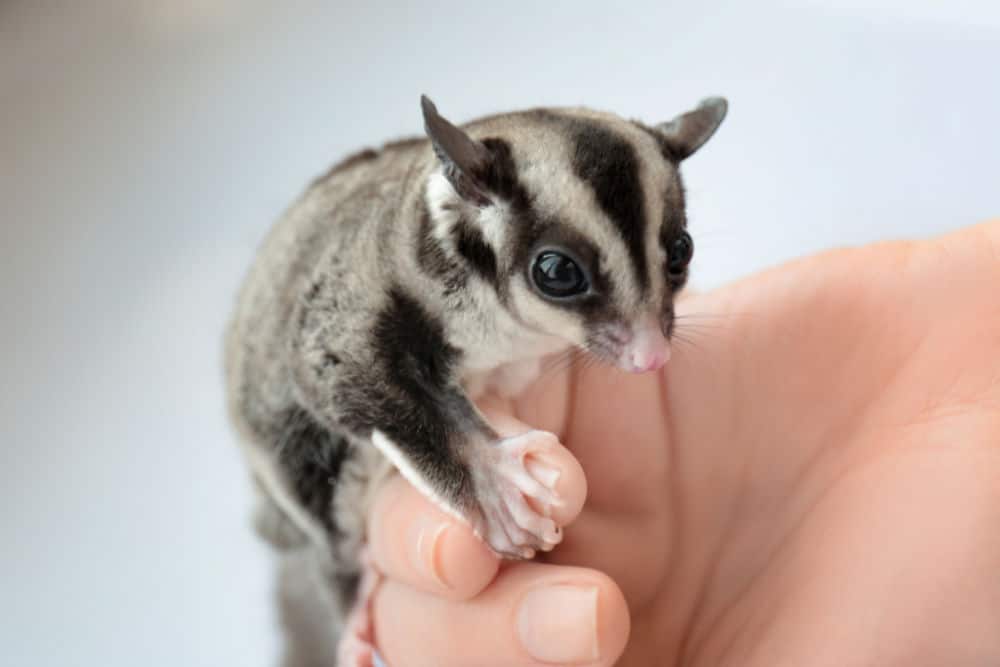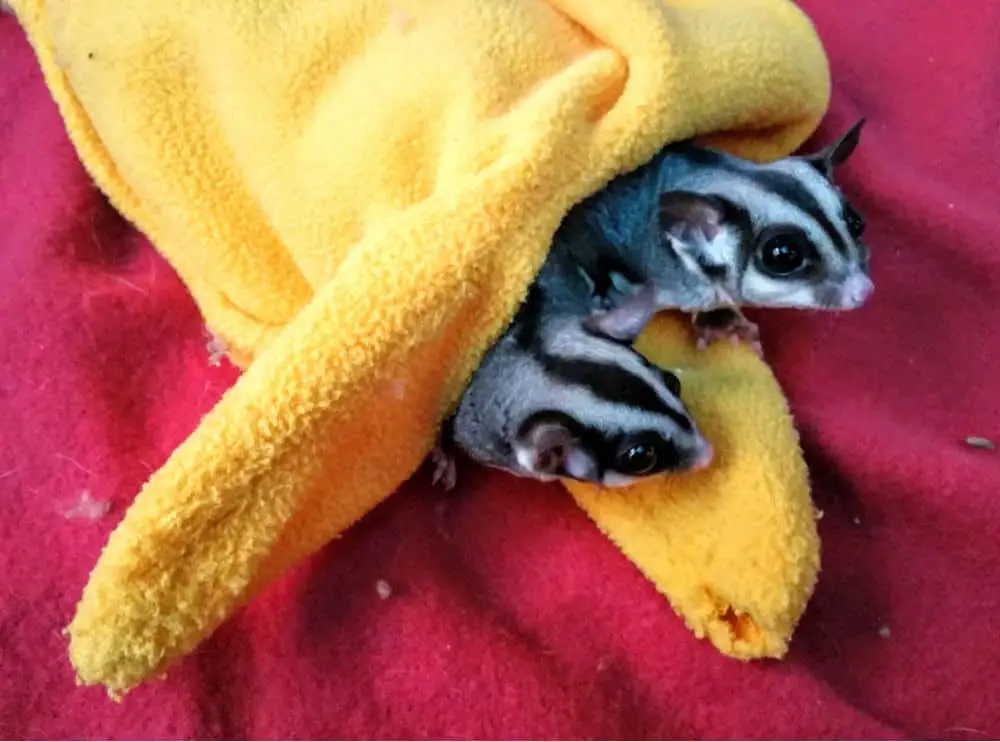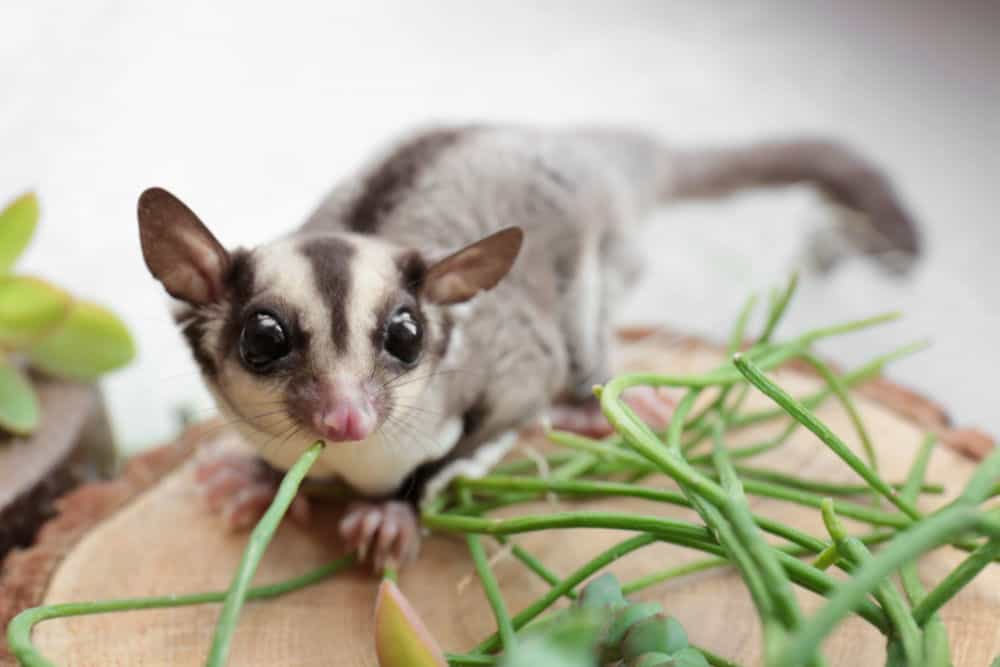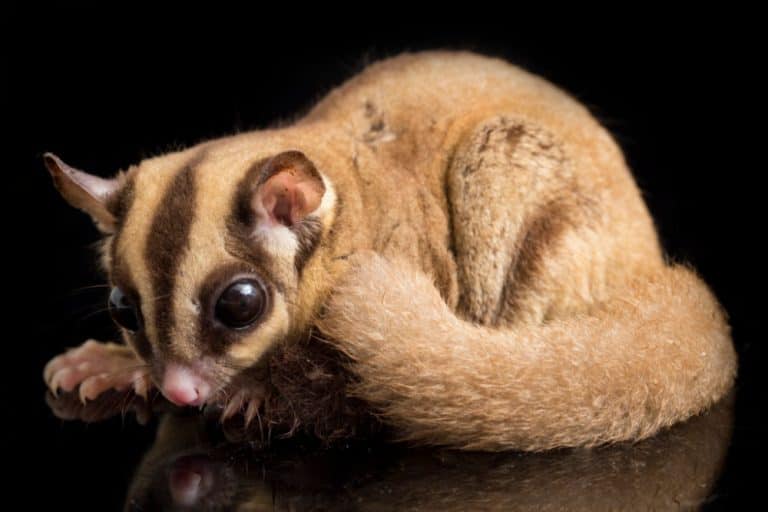Do Sugar Gliders Make Good Pets?
Most people are fascinated with exotic pets. And what could be any more exotic than a sugar glider? They are an adorable pet that draws the attention of everyone around them. You might be tempted to get one as soon as you see them. But let’s take a step back and ask ourselves, do sugar gliders make good pets? Let’s take a look together.
Are Sugar Gliders Good Pets?
While some people love their suggies with all their heart, they are not for everyone. Sugar gliders should be left to a more experienced pet owner. If you have only had experience with dogs or cats, for instance, you might want to work your way up. And sugar gliders are also not good with kids or other animals, so you will need a quiet area just for them.

Pros Of Owning Sugar Gliders
We don’t want you to get the wrong idea. Sugar gliders will make fantastic pets for the right family. To prove it, we will talk about all the beautiful qualities of sugar gliders as pets.
Long Lifespan
One of the best things about suggies is that they have an incredibly long lifespan. Most pocket pets have a short life because of their rodent nature. This can also be said of wild sugar gliders, who only live about a year. Sugars are not technically a rodent, but a marsupial. Their short lifespan in the wild is due to illnesses and predators. But because of domestication and proper care, your sugar gliders could live up to 15 years.
Active
Sugar gliders are the most active small pets. Once they are awake, they are jumping, climbing, running, and playing. They make some of the most adorable sounds and are a joy to watch.
Bonding
Your sugar gliders will have a strong bond with you and all their caretakers. You can’t break this bond easily. There are stories of people who had to give up their suggies due to unforeseen circumstances. And when they came to visit years later, the suggies accept and welcome them with no problems at all. When you have sugar gliders, you have a bond for life.
Playful
We already mentioned that suggies are active little creatures. But they are also very playful. They love to play with each other and with lots of toys. Your sugar gliders will want to explore everything and make it into a fun game. They are like puppies that never grow up.
Intelligent
You will find that sugar gliders are also highly intelligent. They will learn their names and come when you call them. Some people even train their sugar gliders to do tricks. They are capable of doing things like jumping through hoops and basic commands.
Cons Of Owning Sugar Gliders
Now that we know all of the fantastic qualities of sugar gliders, we need to look at a few bad ones. While not all owners mind these qualities, it is vital to consider them before buying suggies. These cons are parts of sugar gliders as pets that you can not change.
Laws
The biggest downside to owning sugar gliders is that they are not legal everywhere. There are a few states where they are illegal to own completely. Other states require you to have a special license and to register your gliders. And then, of course, some cities and counties have different laws from the state. So while gliders might be legal in your state, they might not be permitted in your town.
Cost
Everything about keeping sugar gliders is expensive. Just one sugar glider can cost anywhere from $100-$300 depending on the morph. And then you have the cost of the cage, toys, and food which are all not cheap. And finally, vet costs can be outrageous if you can even find a vet in your area that is. It would be best if you considered financial obligations before taking on gliders.
Colony Creatures
If you haven’t noticed already, we use the plural form of sugar glider throughout this text. That is because you can’t have just one glider. Even if you have all the time in the world, they need to be kept in pairs. A pair of gliders do things like provide security and grooming to the other. They are social and feel best when they have others of their species around. Only in particular circumstances should a glider be left alone.
Nocturnal
Sugar gliders are the most active at night. Nighttime is their time to play, talk, eat, and exercise after being cuddled up all day. This activity makes them also very loud. So you don’t want them near the bedrooms.
Messy
Suggies are super cute pets to own. But they are also very messy. They poop and pee where they please, and can’t be litter trained. It also means that you will spend more time cleaning the cage and around it. If you get gliders, be prepared to embrace the mess.
Nutrition
Sugar gliders are still a very wild creature. They were only just introduced to the USA 20 years ago. That means that our science has not caught up with their nutritional needs. There are very few pellet diets on the market, and none of them are complete in nutrition. Some glider owners choose to formulate their feed and make it in larger batches. (Two common of the most common diets for sugar gliders are the TPG diet and the BLM diet) Other’s follow recipes online to get their gliders a balanced meal. Feeding your gliders can be tedious and expensive.
Time
As you can see, sugar gliders are high maintenance when it comes to their care. But they also are high maintenance when it comes to taming them. It can take months until a sugar glider will even allow you to touch it. And if you want to form a bond with them, you need to spend hours with them trying to get them used to you. Time restraints are the number one reason people rehome their gliders. They don’t have the time to socialize and tame them, so they never get out of the cage.

Basic Care
So you think you’re a good match for sugar gliders despite all the odds? Well then, you will need a few pointers in the right direction of caring for them. Sugar gliders as pets are complicated and have so many other ins and out of trying to care for them. Below we have a few basic care needs to get you started.
Cage
The most crucial part of keeping suggies is their cage. This home should be a metal cage that is at least 2 ft wide x 2 ft deep x 3 ft tall. (A cage, like the Pawhut Rolling Flight cage on Amazon, could be perfect for your suggies.) This measurement is the bare minimum for a pair of gliders; going bigger is always better. You should also measure the space between the bars and be sure that they are no more than 1/2 inch wide. Anything over that and your gliders will escape. And of course, this cage should be decked out in toys, hammocks, nesting boxes, and a wheel for entertainment.
Bedding
Sugar gliders spend most of their days inside nesting boxes or pouches for comfort. Most of these are made of fleece to make them a little cozier. But you might also want to use bedding at the bottom of the cage to absorb urine. Depending on the cage-style you have, you could use fleece liners and change them out regularly. Or you could also use dust-free absorbent paper if your gliders can’t get to it. Gliders will eat the paper that will then expand in their stomach, so it is not for all cages. And you should never use wood shavings as they are known to cause respiratory distress.
Diet
As mentioned before, there are no commercial feeds that are adequate for long term diets. Pelleted food is lacking in vital nutrients that ultimately lead to death in gliders. So to make your gliders happy and healthy, you will need to make your own food. It sounds a lot scarier than it actually is. There are lots of recipes you can follow. The most common and most complete diet is the BML diet, or Bourbon’s Modified Leadbeater’s sugar glider diet.
Exercise
Sugar Gliders should never have free-roam of the entire house. Instead, you can glider-proof their room and let them out for exercise once they are tamed. They should have at least an hour of playtime outside of the cage a day. And a silent wheel that is at least 12 inches for nighttime fun.
Health
All pets are prone to certain diseases or illnesses. Knowing which ones your gliders are prone to can help you recognize the symptoms early. Some common health problems are:
- Dehydration
- Urinary tract infections
- Parasites
- Respiratory infections
- Malnourishment
- Infections from wounds
Surprisingly, the most common reason for a glider to make a vet visit is an accident within the house. Gliders are prone to get hurt throughout the house in almost any way you can imagine. Between being squished, falling in water, or scrapped trying to squeeze into something, homes are the biggest killer of sugar gliders. So you should take extra precautions to make your home safe at all times for gliders. You never know when one might escape.
Our Conclusion
Do sugar gliders make good pets? In the right family, sugar gliders make an incredible pet. You will laugh and love your gliders for years to come. And they will make an interesting talking point with visitors. As long as you are willing to accommodate their needs, nothing is stopping you.



